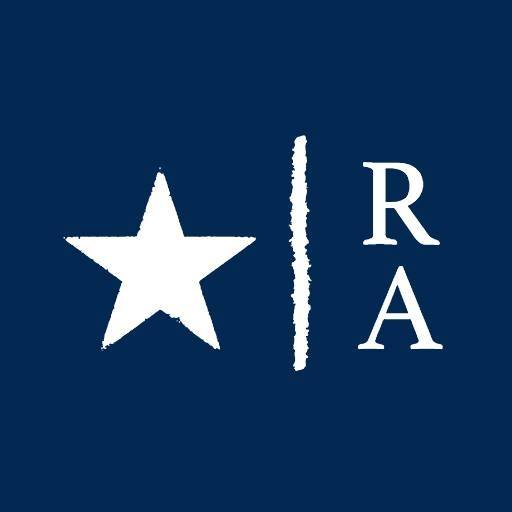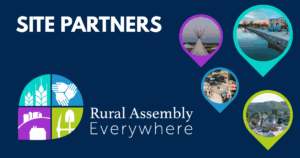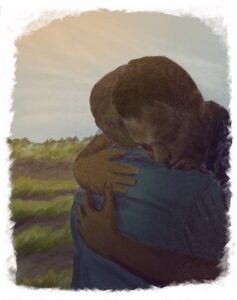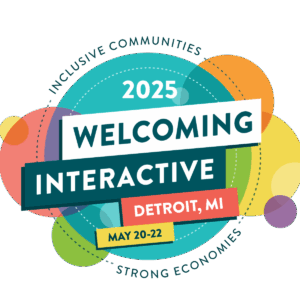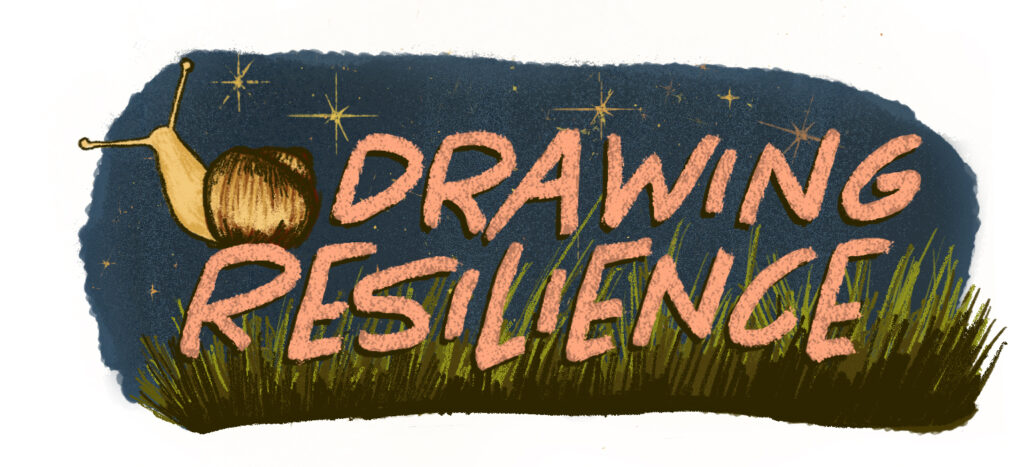

Drawing Resilience: Autumn Cavender
Illustrations and interview by Nhatt Nichols
Wicanhpi Iyotan Win (Autumn Cavender) is Wahpetunwan Dakota and a midwife from Pezihutazizi K’api Makoca (Upper Sioux Community). Autumn is finding new ways to see, visualize and encode designs using traditional Dakota aesthetic and design processes. Her current practice explores quillwork Dakota methodology and its applications through ancestral, digital, and generative technologies.
Her “generative quillwork” has been featured most recently in exhibits at Art Basel-Miami, Miami Art Week, and SXSW, and her work has featured internationally in exhibits on a range of topics, including Indigenous motherhood, the art of gender and sexuality, and showcases of innovative digital and generative art.
Nhatt: You consider yourself to be a Luddite, but glitch art is very tech. How did you start making digital art?
Autumn: Mostly by accident. I’m terrible with computers, mostly because I think computers are very good at doing exactly what you tell them, but not necessarily what you always want them to do. It has cultivated in me this idea that programming is basically magic.
I’m a traditionally trained porcupine quill worker and bead worker. My practice is around designs, aesthetics, and trying to understand what traditional indigenous and Dakota artistic methodology is. How do we continue to create new designs that are not copies of historical ones or are just made up to look pretty? How do we encode meaning? How do we encode story within design work?
I was working with generative tech and really screwing around with technology from the 1990s and early aughts that were used by DJs. The images I was getting out of programming were pretty, but they weren’t necessarily aesthetically Dakota. Then I could get things that were aesthetically Dakota, but they didn’t really make any sense. What I was looking for was something that was both aesthetically Dakota and visually reminiscent of the design concepts that I was putting in.
Finally, one of the first songs we plugged in was a war song from a wax cylinder recording. And the song is about marching off to war. Out of the imagery, I got these square alternating blocks, almost like these footsteps going in a direction. That really was the eureka moment; that’s the program I’ve really used moving forward.
Nhatt:
Being able to build a platform off of old knowledge and create new things feels like the purest form of resilience.
Autumn:
I wonder how much of a line we walk between resilience and resistance in that way. When it comes to the passage of knowledge and the utilization of colonial technologies in an indigenous context, utilizing colonial tech is a necessity born out of colonial repression; you don’t actually get to not engage with it.
There was a time when beadwork was not needed. That’s something we kind of think of as a quintessentially indigenous aesthetic. But there was a time when it was not at all. The necessity of transmitting knowledge through colonial platforms, is that resiliency? Or is it resistance? Or is it some kind of weird amalgamation of the two?
I’m doing a residency right now through the Minnesota Historical Society. One of the examples from the basement archives was lace work that was done in this extremely repressive context. A bunch of the wives of Christian missionaries tried to pull Indigenous women away from their savage arts, putting things lacemaking in their hands to teach them civilized artistic behavior. The designs are reminiscent of Western patterns, then every once in a while, you get something that’s really interesting: a water dragon illustrated as florals wrapped around these lodge designs.
This is how knowledge is transmitted subversively through different mediums. How do you still tell the stories of Water Dragons in these holy places in a way that they won’t see?
Nhatt:
I’ve been having a lot of conversations about the Master’s tools, not dismantling the Master’s House, and that is how I feel about AI in general. But I’m rethinking it because maybe I’m wrong.
Autumn:
When it comes to social justice, coming from a background of activism, that was something I was always told. You can’t bring down the master’s house with the master’s tools. I finally hit the realization that, how else do you expect to bring the damn thing down? Sitting around singing songs is not going to dismantle a house. A hammer can equally be used to punch in a nail as it can to punch in somebody’s skull. The tool itself is not moral or immoral. The tool is amoral. What we do with it matters.
This is compounded by my work as a midwife; understanding the process of birth, the process of pregnancy to be very violent. That doesn’t mean it’s bad. We talk about this within labor and the transition period between labor and pushing are the first and second stages of birth, that something in you has to break, it has to break so that you can become remade. It’s the death of all the things you were before. It’s the death of your previous family structure, of everything you’ve ever known, so that you can be remade as as parent in that moment. And that’s violent. And it’s for some people, it can be very intense and emotionally traumatizing. Part of being a midwife is holding space for people within those transitory times in their lives.
It challenged a lot of my ideas about what is a tool? What is violence? What is morality? What do we what do we hope to accomplish? To be very clear, the mining of the rare minerals necessary for the creation of contemporary technology is violence.
That doesn’t change the fact that those tools are here currently. That doesn’t change the fact that those tools are currently being used.
Get this and other rural content in your inbox with the Rural Assembly newsletter.
